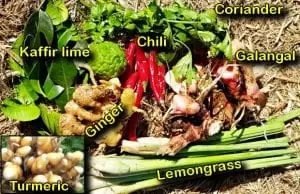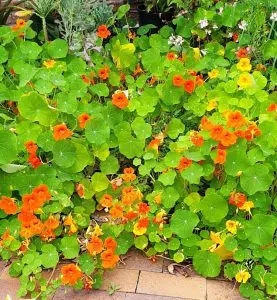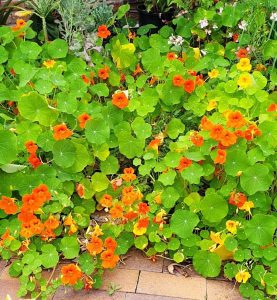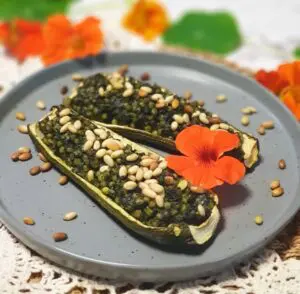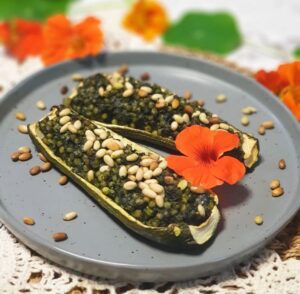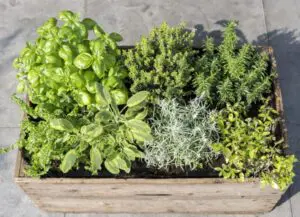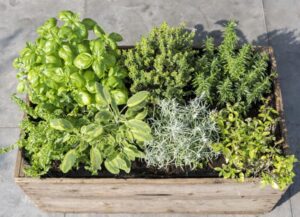I've learnt the hard way when it comes to growing avocado trees. Scroll to the end of this article to watch the VBlog (video).
Initially, back in 2006 when I planted several avos in our orchard, I thought that a foot of topsoil would be enough to grow a healthy avocado tree. All our other fruit trees were thriving so why wouldn't avocados do the same since our climate is perfect for them?
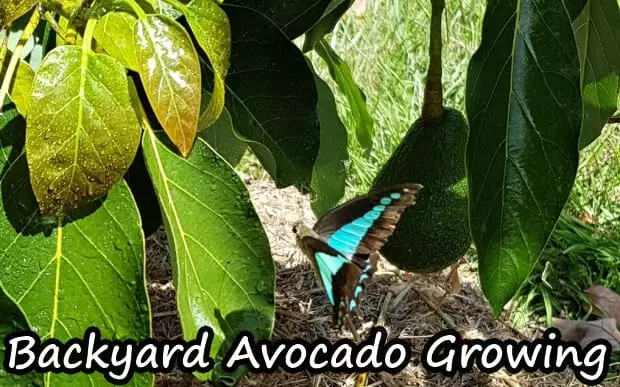
Well, I was terribly wrong and disappointed to find the first signs of deterioration in our avocado trees after the second year in the ground. For the first 18 months our avocado trees grew fast and strong but then they began to wilt, the limbs slowly blackened, and the leaves started falling off exposing the skin of the tree to the harsh sunlight causing burns and scarring.
Over a period of about 12 – 18 months, all our avocado trees slowly perished.
So why did my avocado trees die?
To cut a long story short (because I did spend a protracted and futile time trying to save the trees) what happened was the long avocado tap root eventually grew through the topsoil and into the clay beneath. Ultimately, once an avocado sinks it's tap root into clay soil it's just a matter of time before it dies from root rot disease.
Clay soil when wet is sticky, gluggy, and lacks oxygen, however, it can also dry hard as rock. Avocado trees originated from rainforests where they adapted to grow in fertile black soil loose with deep organic matter and although getting lots of water this free draining growing medium allows the root system to breathe and expand.

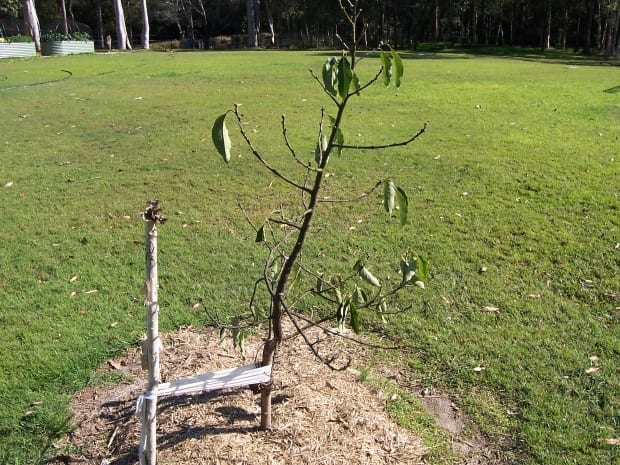
Image above shows dying avocado tree due to root rot
Therefore, avocados have a fickle root system that responds poorly to root disturbance (so be careful when you plant them) and they won't tolerate "hard going" (such as rock, compacted soil, or dry clay) or prolonged periods of low oxygenated sticky wet soil.
But, I have clay soil so how do I plant an avocado tree then?
There's only one option when planting an avocado tree on a property with a clay soil base and that's above ground on a mound or raised garden bed. This method keeps the taproot out of danger and allows the feeder roots to still explore the topsoil and get the nourishment it requires without becoming waterlogged.
To answer this more completely here's a question I received from one of you guys:
Hi Mark,
Just wanted to ask a quick question. I have bought 2 avocado trees (Bacon & Lamb Hass). Live in Sydney. My soil underneath is hard orange/red clay about 50 cm below my topsoil.
Just wanted your opinion on whether I should use a raised bed of about 80cm in Height and 1.5m x 1.5m per plant, or whether I should just mound. Wanted to hear your experience. I prefer the garden bed as it looks cleaner in a suburban house. I'll probably dig up a 75cm to a metre of the clay under the garden bed and replace with compost and potting mix. I did some research and indicated that with 700mm rainfall (avg for west Sydney) needed approximately 1.5 of free draining soil. I'm a bit worried that digging into the clay may produce a well or drain for rainwater to sit in. I have planted mangoes, oranges, pomegranate and apples in the same method, and they are going ok.
I know you tried to grow in a raised bed so just wanted to hear whether it was the raised bed that caused an issue.
Answer:
Firstly, the main thing to focus on is the taproot of an avocado tree it's like its lifeline and stabilising trunk under the soil which can grow straight down up to one metre deep for most medium sized backyard trees. The most important growing tip for avocados (I believe) is to ensure the taproot does not penetrate clay soil.
Therefore, if you have a topsoil of 50cm (or half a metre) then mound up the soil about 70 – 80cm above that (as you suggested) to allow for some settling so when the taproot eventually grows down it doesn't reach the clay. Whether you use a raised garden bed or simply a mound of soil to get the height required isn't important but yes a 1.5 x 1.5 raised bed would be perfect in my opinion. I have two avocados growing in smaller raised beds than that and they're doing well, although, they are dwarf varieties so the root system won't be as large as the standard types.
As far as digging into the clay goes your instinct to be "a bit worried that digging into the clay may produce a well or drain for water to sit in" is right and I know this because I have tried it.

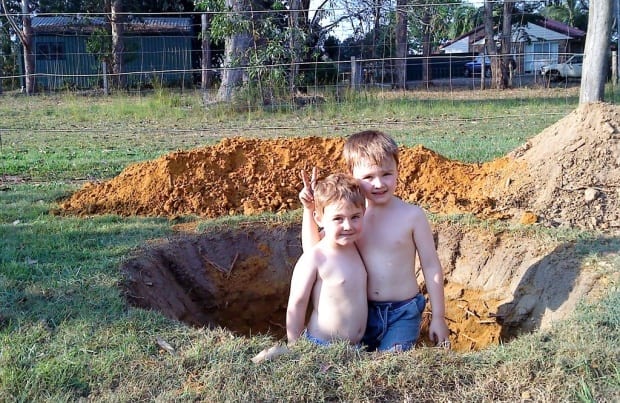
Years ago, after several avocado failures, I dug out a massive hole (image above) and backfilled with plenty of organic matter and good soil plus clay breaker then I mounded the soil and planted the tree. What happened was the hole in the clay acted like a wicking bed and instead of draining away water it just created a wet feet environment for the roots and the tree suffered. I tried replanting the avocado tree but as careful as I was it didn't survive very long after.
I strongly recommend not digging down into the clay at all! Rather always build up so that when the water drains through the mound and subsequent topsoil it hits the clay and gets diverted away like a slow seeping underground river rather than gather in a hole (no matter how large it is or how much good quality growing medium is thrown in).
Our oldest tree which will be 5 years old this January (2018) is an Edranol (type B) non-dwarf/full sized variety and I grew it on a mound of good quality organic matter or in other words a pile of soil about 50cm high. I've continued to mulch the tree well, water regularly, feed yearly with an organic fertiliser, and also top dress with several handfuls of garden lime each year because they do like sweet soil.
This season it has about 15 fruits and it seems the growing fix mounding up above the clay soil as described has worked! I should stress that our avocado trees are still not out of the woods yet because they are still relatively young and who knows what might happen. However, I'm pretty confident they will make it this time.
The research on avocado growing indicates that the longer the tree survives after planting the better chance it has to live a long healthy and productive life. Most avocado trees tend to die from poor soil-related diseases (like root rot) within the first few years and it's uncommon for established older trees to die. It seems once a tree matures past about 3-5 years it's pretty safe because the majority of it's root system has not only avoided problem areas it has also developed a stronger immune system to deal with any such diseases.
On a side note, there's another observation I made over the past 12 years that I find interesting and that's the reshooting of the avocado tree below the graft once the grafted part had died. We had most trees that died back reshoot from the rootstock and try to regrow some failed and others I ripped out simply because I didn't want to grow a tree that probably wouldn't fruit anyway.
However, recently, I did leave one tree as an experiment to grow because it was out of the way in in an ornamental part of our property anyway. The grafted part of the tree died but the sucker growth is still alive and has been growing albeit slowly for the past 3 years.
I'm far from a plant expert, however, I do think that grafted avocado trees are inherently weaker than those grown from seed and therefore are more susceptible to disease particularly in the early years.
What can we make out of this observation? Well, avocado tree failure is commonly blamed on the fickle root system and that's true; however, adding a graft to an avocado weakens the plant overall and might also be a major reason why they are notoriously difficult to grow. The alternative is to grow completely from seed to get a hardier tree but then you may have to wait over a decade for fruit at the same time running the risk that the fruit would be poor quality anyway.
My Grandparents grew an avocado tree from seed and it did finally fruit profusely after many years but the fruit was pretty stringy – edible, but not great… Once their grafted Hass avocado grew to size and started producing superior fruit they cut the old seed grown tree down.
So, until someone improves the disease resistance and hardiness of grafted avocado trees either grow them where there isn't clay or mound them up and hope for the best!
Here is the video blog (Vblog) of this article:



